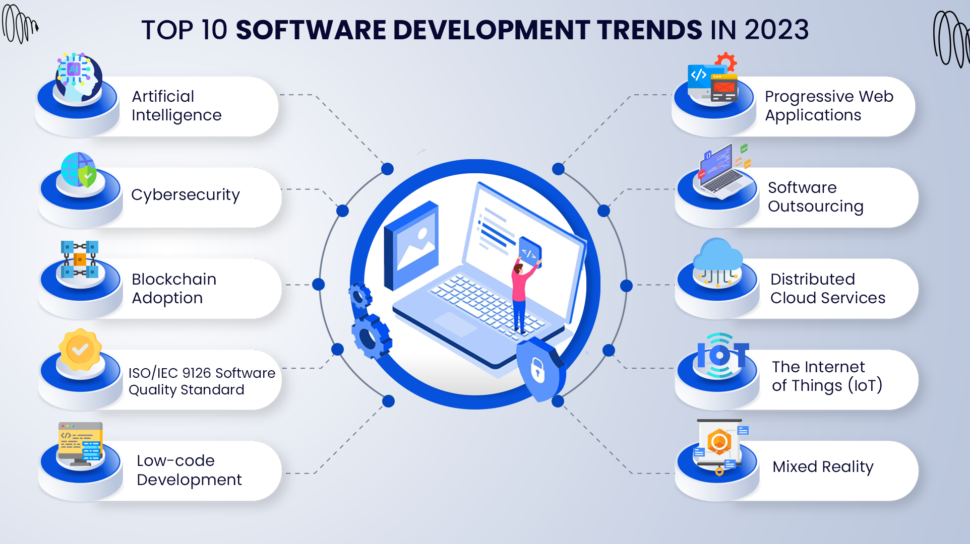As technology hurtles toward the future, the realm of multimedia software development stands at the forefront of innovation. The evolution of multimedia is marked by dynamic shifts in user expectations, technological capabilities, and creative possibilities. This article explores the emerging trends that are shaping the future frontiers of multimedia software development, offering a glimpse into the exciting landscape that lies ahead.

- Augmented Reality (AR) Integration: Bridging the Digital and Physical Realms: The integration of augmented reality into multimedia software is set to redefine user interactions. Developers are exploring ways to seamlessly blend digital content with the physical world, creating immersive AR experiences that enhance how users engage with multimedia.
- Virtual Reality (VR) Advancements: Beyond Gaming to Everyday Experiences: VR is transcending its roots in gaming to become a pervasive part of everyday experiences. Multimedia software developers are focusing on creating realistic VR environments for education, training, virtual tourism, and collaborative workspaces, unlocking new dimensions of interaction.
- AI-Powered Content Creation: Intelligent Multimedia Generation: Artificial intelligence is revolutionizing content creation in multimedia. From generating realistic visuals to automating video editing, AI is becoming a creative collaborator, allowing developers to enhance efficiency and explore new realms of multimedia expression.
- Immersive 3D Audio: Spatial Soundscapes for Enhanced Experiences: The future of multimedia includes advancements in 3D audio technology. Developers are working on creating spatial soundscapes that enhance immersion, providing users with a more realistic and dynamic auditory experience in virtual environments and multimedia content.
- Real-Time Collaboration: Multimedia Development in a Connected World: Real-time collaboration tools within multimedia software are fostering global creativity. Developers can now collaborate seamlessly, irrespective of geographical boundaries, enabling the creation of multimedia projects with diverse perspectives and expertise.
- Blockchain in Multimedia: Securing Content and Enhancing Distribution: Blockchain technology is making its mark in multimedia by providing secure content distribution and ownership verification. Developers are exploring blockchain applications to ensure transparent rights management, secure distribution channels, and decentralized multimedia platforms.
- Generative Design: AI-Infused Creativity in Multimedia Artistry: Generative design, powered by AI algorithms, is pushing the boundaries of creativity in multimedia. From dynamically generated visuals to music composition, developers are harnessing AI to explore novel ways of infusing unpredictability and innovation into multimedia content.
- Cross-Reality (XR) Experiences: Blurring Virtual and Augmented Realities: The convergence of virtual and augmented realities into cross-reality (XR) experiences is a frontier in multimedia development. XR merges VR, AR, and mixed reality, providing users with a seamless transition between digital and physical environments for more holistic multimedia encounters.
- Edge Computing for Multimedia Processing: Optimizing Performance and Latency: Edge computing is poised to revolutionize multimedia processing by bringing computational power closer to the source of data. This trend enhances performance and reduces latency, enabling real-time multimedia applications with improved responsiveness and efficiency.
- Personalized and Adaptive User Experiences: Tailoring Content in Real Time: The future of multimedia software development lies in personalized and adaptive user experiences. Through machine learning algorithms, developers can analyze user behavior in real time, tailoring multimedia content to individual preferences and creating more engaging and relevant experiences.
Conclusion:
As multimedia software development ventures into the future, the convergence of augmented reality, virtual reality, artificial intelligence, and other cutting-edge technologies is redefining the possibilities. Developers stand on the brink of a new era where the lines between reality and digital experience blur, ushering in an exciting epoch of creativity, collaboration, and immersive multimedia encounters. The future frontiers of multimedia software development promise a tapestry of innovation that will shape how we interact with and perceive digital content in the years to come.

